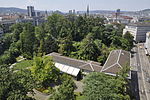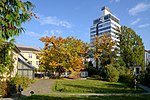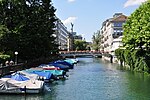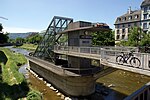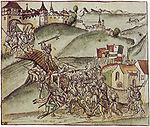Synagoge Zürich Löwenstrasse

The Synagoge Zürich Löwenstrasse is the oldest and largest synagogue in the Swiss municipality of Zürich. In 1884 built in Moorish style, the oldest synagogue of Zürich also houses the prayer and school house of Israelitische Cultusgemeinde Zürich (ICZ) which was founded in 1862. ICZ is a unified Jewish community having about 2,500 members, and thus the largest Jewish community in Switzerland, which since 2007 in the Canton of Zürich is recognized as a denomination, i.e. it has the same legal state as the Christian denominations. In the synagogue, the community celebrates the daily Minyan and Shabbat and holiday services. The synagogue is a cultural heritage of national importance in Switzerland.
Excerpt from the Wikipedia article Synagoge Zürich Löwenstrasse (License: CC BY-SA 3.0, Authors, Images).Synagoge Zürich Löwenstrasse
Löwenstrasse, Zurich Altstadt
Geographical coordinates (GPS) Address Website Nearby Places Show on map
Geographical coordinates (GPS)
| Latitude | Longitude |
|---|---|
| N 47.372919444444 ° | E 8.5347638888889 ° |
Address
Urban
Löwenstrasse 2
8021 Zurich, Altstadt
Zurich, Switzerland
Open on Google Maps

